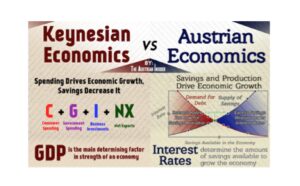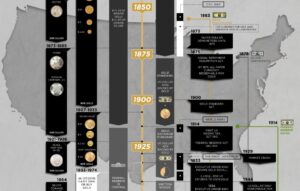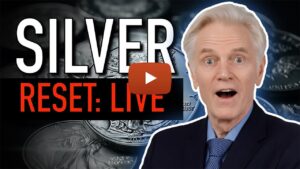How much of your portfolio should be in gold or silver? What percent of your portfolio should they comprise? And should you buy more of one metal than the other?
These are important questions. Buy too little and they may not make a material difference to your portfolio. Imagine the sick feeling in your gut if, during a crisis, you realize you didn’t buy enough bullion to withstand it (or better, if you had enough gold and silver, to earn a handsome profit from it). Buy too much and your portfolio is negatively impacted if prices go nowhere or fall.
To answer this question effectively, there are some practical guidelines to consider. And since every person’s circumstances are different, this article will help you develop a custom-tailored strategy suitable to your goals and risk tolerance.
Here are three key questions to ask yourself, along with a bonus question. Answer them and you’ll soon have a bullion strategy ideal for your personal situation…
Question #1: What Are Your Goals as an Investor?
The starting point is to understand your goals. The following questions might help clarify why you’re buying gold and silver, which is the first step in determining how much to allocate to them.
Are you buying gold and silver…
- For a short-term gain, or as a permanent long-term holding? Or maybe both?
- Because they are currently undervalued and you plan to sell when they become overvalued?
- As a hedge, because you’re concerned about the potential future downside in the stock market or the economy in general
- For collectible purposes, to potentially earn more profit than standard bullion?
- Because you want to own a tangible asset and not a paper form of metal?
As you ponder your priorities, keep your risk tolerance in mind. The less risk you want, the more gold you want. That’s because it’s been money for thousands of years and never gone to zero. In a worst-case scenario where everything else has gone to zero, gold will be the last line of financial defense for everyone. And be priced accordingly.
One criticism of gold is that it doesn’t produce profits or pay dividends like stocks. However, it is precisely the lack of those characteristics that gives gold value.
Physical gold and silver…
- Do not have to please shareholders with quarterly results. Stocks do.
- Carry zero counterparty risk. Most investments do.
- Are a store of value, particularly during crises and crashes. Stocks are not.
- Have limited supply. Fiat currency has unlimited supply.
One of these factors is especially important… consider just how much you trust a corporate or government entity to hold up their end of the bargain in a systemic financial crisis. Then consider how your goals match up with this fact:
- Gold and silver in physical form have no counterparty risk. By owning them, you and you alone possess their full value at all times.
Question #2: How Much Do I Need to Make a Difference?
I shorted the stock market in October 2008, when the S&P fell as much as 33% in one month.
It was great timing! I’d bought shares in SDS (ProShares Ultra Short S&P 500), an ETF that rose twice as much as the S&P fell. It was a short-term trade, and I personally booked a profit of over 50% in three weeks.
You probably think I made a lot of money. But it made almost no difference to my overall portfolio!
That’s because I didn’t buy enough shares relative to the size of my total assets. My position was too small to make any difference to my portfolio—it was so small, in fact, that my net worth still ended the month lower.
I made the correct investment call. My timing was great. But my small position kept me from benefitting.
- You can’t buy one Gold Eagle or one tube of Silver Maple Leafs and expect either to provide much benefit.
So how much will make a difference? Here’s some solid, long-term research that can help answer the question…
CPM Group conducted a long-term study into the ideal risk/reward ratio for gold in a portfolio. The research spans 53 years, and includes stocks and bonds.
The chart may look confusing, but basically the further to the right the greater the risk, and the higher on the chart the greater the return. Here’s what it showed:

The research showed that the “sweet spot” for the percentage of gold in portfolio is 20%. On a long-term basis this provides the best balance between risk and reward.
I’ll point out, though, that the current environment may warrant being overweight gold. Trillion-dollar stimulus plans, never-before-seen deficit spending, stock market and real estate bubbles, geopolitical conflicts—the list goes on.
Whatever you decide, the bottom line is that anything less than 5% won’t cut it. If you have 5% in gold and 50% in the S&P, for example, then gold needs to rise 400% if the stock market falls 50% just to break even (assuming gold rises as much as stocks fall). And keep in mind that bear markets actually last a lot longer than many investors realize.
Remember what happened to me above: even though I had the right investment at the right time, my allocation was too small to make a difference. Don’t make the same mistake with your precious metals portfolio allocation.
My personal strategy is to prepare for the scenario Mike Maloney has warned is coming. Even if he’s only half right I’ll be well protected and even prosper. Either way…
- Make sure you own enough physical gold and silver to make a material difference to your portfolio.
Question #3: How Much Do I Need To Support My Expenses?
Another practical way to determine how much bullion you may want is to match it up with your expenses.
What if you someday needed to sell some of your holdings to support your household? Unemployment and high inflation are just a couple reasons one might need to use their bullion to meet their monthly expenses.
This table shows how much gold you’d need on a monthly basis, depending on your expenses and how long you might need it to supplement your finances.

If you need to supplement your monthly income by $1,000, for example, and that need would last for two years, you’d want to have 14 ounces of gold. As the price rises you’d need fewer ounces (though keep in mind any gold you sell for a profit is taxable, just like any investment).
What about silver? Here’s how many silver ounces you’d need, depending on your expenses and how long you’d need to use it.

Again you’d need fewer ounces as the silver price rises. Keep in mind, however, that if you own both gold and silver, the amount of each you’d need would be lower.
Look at your expenses, and how long you might need to supplement them, and you’ll gain some insight into how many ounces you might want to own.
Bonus Question: Should I Buy More Gold or More Silver?
Physical gold and silver share many of the same characteristics. They’re tangible assets you can hold in your hand… are portable… are highly liquid… and can be sold almost anywhere in the world.
However, each has distinct advantages over the other. See how their differences might help you determine how much of each you want.

Perhaps the two biggest factors to keep in mind is that first, the silver price is more volatile. Which means you stand to earn more profit in a precious metals bull market than gold, but lose more in a bear market.
And second, silver takes up a LOT more space. So if you plan to buy a lot, you’ll probably need to keep the bulk of it in a professional storage account. It’s just not practical, or safe, to keep a lot of silver in the house.
If you do use storage, here’s a money-saving trick I learned: buy bars, because they have lower premiums. It’s also true that gold bars are cheaper than gold coins.
- The best advice is to have exposure to both metals in your investment portfolio, and not just one or the other.
How to Buy Small Amounts of Gold & Silver
If your budget is tight or you prefer to invest in smaller amounts over time, gold and silver products are manufactured in partial-ounce increments.
So if you can’t afford a full ounce, you can buy half ounce, or even smaller increments. The catch is, premiums are higher on these products… it costs the refiner just as much to make a half ounce as a quarter ounce, so the cost, as a percentage of the price, is higher.
But there’s a way around that. You can buy real gold and silver with GoldSilver’s InstaVault program. It’s ideal for two reasons:
- It allows you to buy whatever amount fits your budget
- It’s a way around premiums when they’re high. Buy InstaVault and own real physical ounces of gold and silver, then convert to whole products when they come down (or take delivery), or simply hold for the long-term. It’s hugely popular for this very reason.
Here’s InstaVault Gold, and here’s InstaVault Silver. See how they might fit your needs.
How to Buy Large Amounts of Gold & Silver
If you’re looking to make a large investment in gold, InstaVault (buy 100, 500, 1000 or more ounces if you wish) and large gold bars or silver bars are the most cost-effective, lowest-premium options.
If you prefer coins, 500 troy ounce Mint Cases of Silver Eagles and Silver Maple Leafs affectionately known as “monster boxes” are also available.
And consider using private vault storage for large amounts of gold and silver. You get instant liquidity, round-the-clock security and full insurance… and you can always take home delivery if you need to.
Last, what about other precious metals?
The other two primary precious metals are platinum and palladium. They’re classified as “precious” metals because their occurrence in the earth’s crust is rare.
However, their uses are almost exclusively industrial, making them susceptible to economic health. And as this article shows, they’re not safe haven assets, and are therefore more vulnerable to crises. This is the reason GoldSilver does not sell them.








